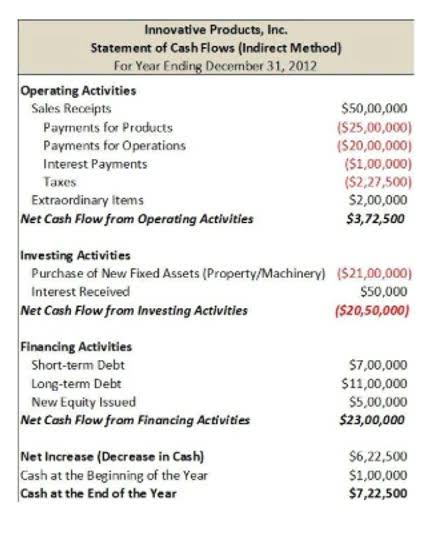![]()
That’s why thousands of business owners use the Countingup app to make their financial admin easier. Xero is a top accounting tool for eBay businesses that can simplify your bookkeeping processes. It helps you streamline your financial records, saving you https://www.bookstime.com/articles/how-long-should-you-keep-business-records time and effort. With real-time insights, you can stay updated on your finances and make informed decisions for your business. With their expertise, they can provide you with real-time financial insights, allowing you to make informed business decisions.
The Limitations of Using Spreadsheets for eBay Bookkeeping
It can also help you manage your business expenses to see how much profit you turn over compared to your inventory costs. The app allows you to create and send unlimited invoices on the go. Then, the app will automatically match received invoices to payments and notify you when they come in so you can track the cash you earn. To make sure you bring in the cash from your sales, you’ll need to create and send invoices to your customers. This is especially important since your sales are entirely online, and customers may often pay with credit. For simple bookkeeping for eBay, consider creating a timetable for sending out invoices and using invoice templates to save time.
eBay Bookkeeping Guide [2024 Update] Seller Essentials
For these reasons, no matter whether your eBay business turns over $100/week or $10,000, cloud accounting software is the way to go. One way to organize receipts and invoices is by ebay bookkeeping creating separate folders or digital files for each month or quarter. You can also use accounting software that allows you to upload and categorize these documents automatically.
Separate Personal and Business Finances:
A2X is versatile enough to handle accounting for sales on eBay alone or across multiple channels and countries. It categorizes each eBay transaction, including sales, fees, taxes, and refunds, into detailed summaries that match perfectly with deposits in your accounting system. The Plus plan is recommended for eBay sellers due to its advanced inventory management and profit analysis features. If you’re based in North America, you’ve probably heard of Intuit’s QuickBooks Online (QBO). It’s currently the most popular accounting solution for small businesses in the United States and Canada.
- But one ecommerce bank deposit can house numerous lines of information which aren’t always split out for you.
- Learn how to revise and send invoices, as well as how to combine multiple items into one invoice.
- For simple bookkeeping for eBay, consider creating a timetable for sending out invoices and using invoice templates to save time.
- EBay business owners know that proper and timely bookkeeping is necessary to maintain a successful shop.
- This interactivity makes the dashboard very effective and timely—one of the best I’ve seen.

So whether you’re using QuickBooks, Xero, or another platform, you’ll get the maximum support. ConnectBooks is undoubtedly the best accounting software for streamlining your financial operations. From keeping track of your sales and expenses to generating reports, this software has got you covered. Its integration with eBay is seamless, helping you save time and effort while ensuring accuracy in your records.

By keeping these documents in order, you can easily access them when needed for tax purposes or financial reporting. Facilitating tax compliance is a crucial aspect of eBay bookkeeping. As sellers, it’s important to keep accurate financial records to ensure that you are meeting your tax obligations. EBay bookkeeping involves the process of recording and managing financial transactions specific to eBay sellers, ensuring accurate records for tax compliance and business analysis. It’s ideal for large eBay sellers (or multi-channel sellers who include eBay in their channel mix) who need detailed accounting, inventory, operations, and financial management.
Find daily, weekly, and monthly tasks to keep your business finances on track effortlessly. Stay updated with accounting regulations to avoid any compliance issues. By embracing these software options, you can effectively automate various facets of your eBay bookkeeping, saving valuable time and energy. Take the opportunity to explore these alternatives and identify the one that aligns best with your unique business requirements. In addition to Xero and QuickBooks, there are two other noteworthy accounting tools that can greatly benefit eBay businesses.

While you’re thinking about managing money, you should also check out our roundups of the best payroll services and the best tax prep software. You can ask to be notified when a client views or accepts one, or when one is about to expire. Once you’ve created a client record, its information will appear on a home page of sorts, along with a list of open invoices and a link for creating invoices. Boxes at the top of the page display the client’s hourly rate, uninvoiced amount, and billable hours for the month and year. GoDaddy Bookkeeping Premium is just a penny shy of being the most expensive site for freelancers, since QuickBooks Self-Employed costs $15 per month.
What is the best accounting software for eBay sellers?
Find out all the fees that you could be charged as a seller, how to manage them, and how to reduce them. If you haven’t already, we would highly recommend you put together an eBay business plan which will help you articulate the goals you have for your business. Its future will dictate the tools you need to get there, and some software options will be better suited to these than others.
- The main difference between eBay bookkeeping and eBay accounting, is that accountancy is about tracking rules and regulations vs. bookkeeping where we look to track our financials.
- Zoho Inventory isn’t a thorough accounting solution, but it syncs with Zoho Books, which tracks expenses, reconciles bank accounts, and lets you send multilingual invoices.
- Sage Business Cloud Accounting, in particular, is a good choice for eBay sellers who need a comprehensive, cloud-based accounting tool.
- You can provide company names and billing addresses, along with an hourly rate, multiple contacts, and a shipping address.
- Bookkeeping also plays a vital role in facilitating tax compliance and ensuring that sellers meet regulatory requirements.




